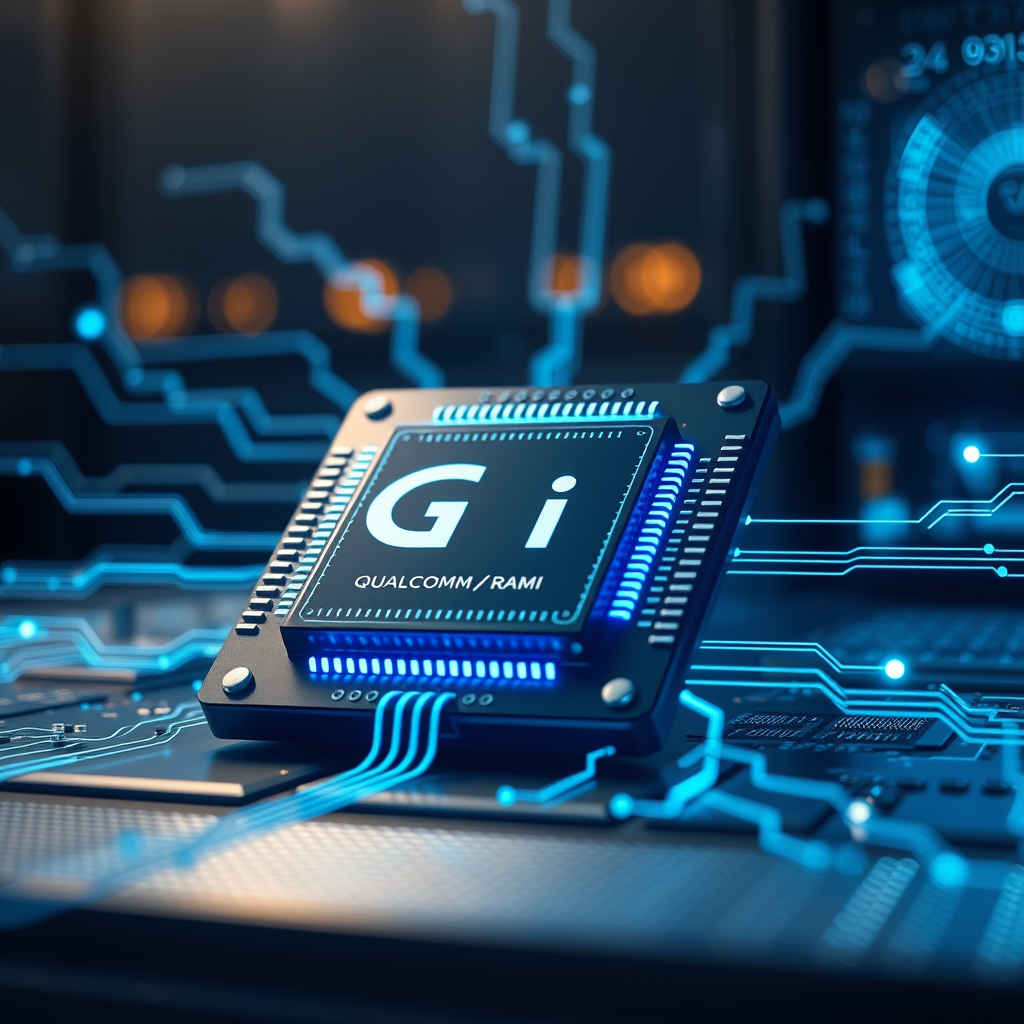
Introduction
Qualcomm, a name synonymous with mobile processors and telecommunications gear for over four decades, has announced a bold new chapter: the launch of a line of AI‑centric chips designed for the burgeoning AI infrastructure market. This move signals a strategic pivot from its traditional focus on mobile and networking solutions to a broader role in the AI ecosystem, where hardware performance and efficiency are becoming as critical as software frameworks. The announcement comes at a time when the demand for AI acceleration is exploding, driven by everything from cloud‑based machine learning services to edge‑computing applications in autonomous vehicles and industrial automation. By entering this space, Qualcomm positions itself to supply the silicon that powers the next generation of AI workloads, potentially reshaping its competitive landscape and revenue streams.
The new chips are more than a simple extension of Qualcomm’s existing product line; they represent a deliberate effort to capture a share of the AI infrastructure market that has traditionally been dominated by companies such as NVIDIA, AMD, and Intel. While Qualcomm has long been a leader in system‑on‑chip (SoC) design, the AI chips are tailored to deliver high throughput for matrix operations, low‑latency inference, and energy‑efficient training workloads. The company’s announcement also underscores its commitment to the broader ecosystem, as it plans to partner with cloud providers, software developers, and hardware integrators to create a seamless stack from silicon to application.
In this post, we explore the technical nuances of Qualcomm’s new AI chips, the strategic motivations behind the move, and the implications for the industry at large. We’ll also examine how this development fits into the broader narrative of AI hardware evolution, and what it means for businesses looking to adopt AI solutions.
Main Content
Qualcomm’s Legacy and the AI Hardware Landscape
Qualcomm’s history is deeply rooted in mobile innovation, having pioneered the Snapdragon line of processors that power billions of smartphones worldwide. Over the years, the company has expanded into 5G modem technology, automotive connectivity, and IoT solutions, consistently leveraging its expertise in integrated system design. However, the AI hardware arena has been a relatively new frontier for the firm.
The AI hardware market is characterized by a few key players. NVIDIA’s GPUs have long dominated data‑center inference, while AMD’s EPYC CPUs and GPUs have carved out a niche in high‑performance computing. Intel’s acquisition of Habana Labs and its own Xe architecture signal a push into AI acceleration. Qualcomm’s entry adds a fresh perspective, bringing its experience in low‑power, high‑integration SoCs to bear on AI workloads.
The market is also driven by the increasing need for edge AI, where latency, power consumption, and form factor are critical. Qualcomm’s new chips are designed with these constraints in mind, offering a balance between performance and efficiency that could appeal to a wide range of applications, from autonomous drones to smart home devices.
Technical Overview of the New AI Chips
At the heart of Qualcomm’s new AI offering is a custom tensor processing engine (TPE) that is optimized for the types of operations that dominate machine learning workloads. The TPE is built on a systolic array architecture, which allows for efficient data movement and high utilization of compute units. This design choice mirrors the approach taken by NVIDIA’s Tensor Cores but is tailored to Qualcomm’s silicon fabrication process.
One of the standout features of the chips is their support for mixed‑precision arithmetic, specifically 8‑bit integer (INT8) and 16‑bit floating‑point (FP16) operations. Mixed‑precision computation has become a standard in AI acceleration because it reduces memory bandwidth requirements while maintaining acceptable accuracy for most inference tasks. Qualcomm’s implementation also includes a dedicated memory hierarchy that minimizes data transfer latency between the TPE and the main system memory.
Power efficiency is another critical aspect. The chips incorporate dynamic voltage and frequency scaling (DVFS) that adapts to workload demands in real time. During periods of low activity, the silicon can throttle down to conserve energy, while during peak inference or training phases it can ramp up to deliver maximum throughput. This flexibility is especially valuable for edge deployments where power budgets are tight.
Beyond the hardware, Qualcomm is investing in a software stack that includes a compiler and runtime library designed to translate high‑level machine learning frameworks into optimized kernels for the TPE. This ecosystem approach mirrors the success of NVIDIA’s CUDA and TensorRT, ensuring that developers can port their models with minimal friction.
Strategic Implications for Qualcomm and the Industry
Qualcomm’s foray into AI infrastructure is not merely a product launch; it reflects a broader strategic vision. By adding AI acceleration to its portfolio, the company can tap into new revenue streams that are less susceptible to the cyclical nature of the mobile market. The AI chip market is projected to grow at a compound annual growth rate (CAGR) of over 30% in the next decade, driven by cloud service providers and the proliferation of AI‑enabled devices.
For Qualcomm, the move also strengthens its position in the automotive sector. Modern vehicles are increasingly reliant on AI for perception, decision‑making, and infotainment. Having a dedicated AI chip allows Qualcomm to offer a more integrated solution to automotive OEMs, potentially securing long‑term contracts and fostering deeper partnerships.
From an industry perspective, Qualcomm’s entry intensifies competition in a space that has seen rapid consolidation. The company’s expertise in low‑power design could spur innovation in edge AI, encouraging other vendors to prioritize energy efficiency. Moreover, Qualcomm’s global supply chain and manufacturing capabilities could help mitigate the chip shortages that have plagued the industry in recent years.
Competitive Landscape and Market Opportunities
While NVIDIA and AMD have established a strong foothold in data‑center AI, Qualcomm’s focus on edge and integrated solutions creates a complementary niche. The company’s chips could serve as the backbone for AI workloads in 5G base stations, industrial IoT gateways, and consumer electronics, where the combination of connectivity and computation is essential.
The partnership model is also a key differentiator. Qualcomm has announced collaborations with major cloud providers such as Amazon Web Services and Microsoft Azure to integrate its AI chips into their edge computing offerings. These alliances can accelerate adoption and provide a platform for developers to experiment with new AI applications.
In terms of market opportunities, the AI infrastructure sector is not limited to data centers. Emerging fields such as augmented reality, robotics, and smart cities require specialized hardware that can deliver real‑time inference with low latency. Qualcomm’s new chips, with their balanced performance and power profile, are well‑suited to meet these demands.
Conclusion
Qualcomm’s launch of AI chips marks a significant milestone in the company’s evolution from a mobile processor pioneer to a comprehensive AI infrastructure provider. By leveraging its deep expertise in SoC design, low‑power architecture, and global manufacturing, Qualcomm is poised to capture a meaningful share of the AI hardware market. The new chips’ mixed‑precision support, efficient memory hierarchy, and dynamic power management position them as strong contenders for both edge and data‑center applications.
The broader industry stands to benefit from this development as well. Increased competition can drive down costs, spur innovation, and accelerate the deployment of AI across diverse sectors. For businesses, Qualcomm’s entry offers a new avenue to access high‑performance AI hardware that is tightly integrated with connectivity solutions, potentially simplifying architecture and reducing time‑to‑market.
As AI continues to permeate every facet of technology, the importance of specialized hardware cannot be overstated. Qualcomm’s strategic move underscores the necessity of aligning silicon capabilities with evolving software demands, ensuring that the next wave of AI applications can run efficiently, reliably, and at scale.
Call to Action
If you’re a developer, data‑scientist, or enterprise IT leader looking to explore the latest AI hardware, Qualcomm’s new AI chips present an exciting opportunity to experiment with high‑performance, low‑power solutions. Reach out to Qualcomm’s partner network to learn how these chips can be integrated into your existing infrastructure, or join upcoming webinars where engineers will dive into the technical details and real‑world use cases. By staying ahead of the curve and embracing cutting‑edge silicon, you can unlock new efficiencies, reduce operational costs, and accelerate your AI initiatives toward tangible business outcomes.

